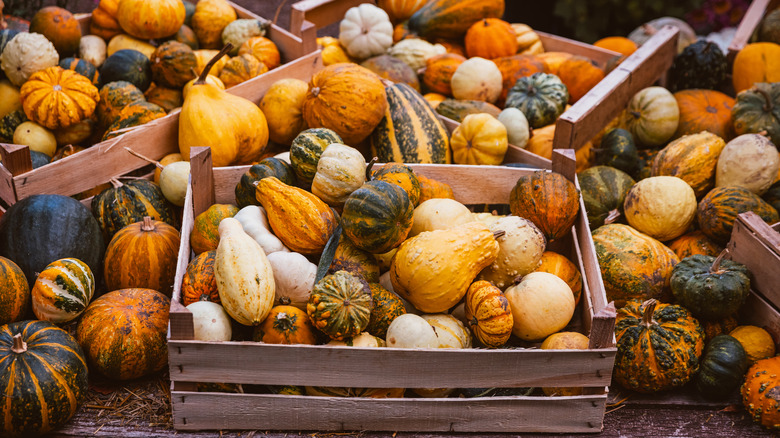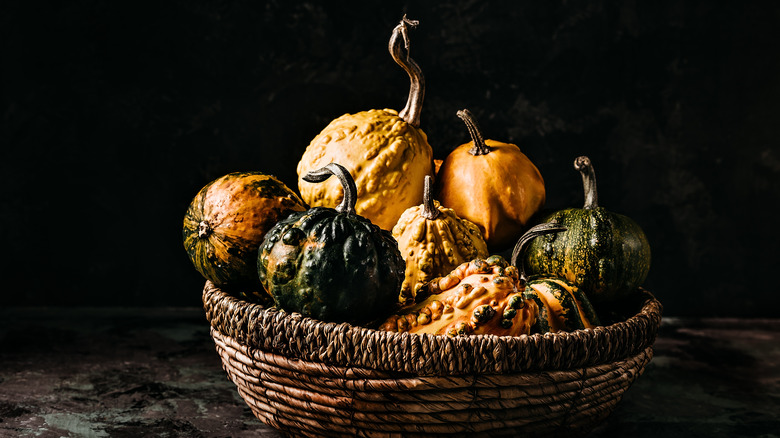Are Decorative Fall Gourds Edible?
We've all seen those small, bumpy gourds, sometimes with the long, twisty stems, that show up every fall in your store, like clockwork. Yet, while they're popular for decorating, they never end up on our dinner plates. Are they even edible? These gourds belong to the same family as pumpkins and squash, which are ingredients in many classic fall dishes we enjoy. So, can we munch on them in the same manner?
Not quite. Technically speaking, yes, some decorative fall gourds are edible. However, not all of them are, and even the ones that are technically okay to eat aren't exactly appetizing. Gourds have hard, tough shells and only a small amount of consumable flesh underneath, making them difficult to prepare or enjoy. You're much better off picking out a more classic pumpkin or squash and using them to make fall classics like pumpkin soup made with the gourd's innards or pumpkin pie seasoned with a homemade pumpkin spice seasoning blend.
You'll have to be especially careful with some species of decorative gourds, like Citrullus colocynthis (also known as bitter apple, colocynth, or bitter cucumber), which is poisonous and can cause adverse health effects if consumed. It's rare but not unheard-of to see colocynth sold as a decorative gourd. Its unpleasant effect is due to nasty-tasting cucurbitacins present in all parts of the fruit, which can cause some pretty marked gastrointestinal distress.
Even technically edible gourds are best left alone
Even with edible gourds, you should not eat them if you get them from retail stores, especially craft stores. Decorative gourds are dried out as part of their curing process, often for months at a time, and also typically covered with wax or some other type of preservative before they reach the shelves. You're not likely to get anything edible out of any of them, and you most certainly don't want to eat the wax coating, either.
If you are determined to eat a decorative gourd, it's best to get one fresh from a farmer's market. Ensure you're buying an edible variety and that the gourd in question is fresh, meaning it hasn't been dried out to be used as decoration. You can make what little edible flesh you can get from it into pie or other dishes like pumpkin soup as you would an ordinary pumpkin or squash, though don't be surprised if it doesn't measure up to all the effort it took to get there.
Of course, never eat gourds that show signs of spoilage, regardless of anything else. Watch out for discoloration, soft spots, and holes. If you have gourds from a store you've been using as decoration and they go bad, throw them away. It may be tempting to leave them outside for wildlife to eat, but that could encourage pest activity, and the protective coating is no better for them than it is for you.

